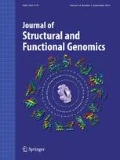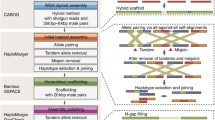Abstract
With the acquisition of complete genome sequences from several animals, there is renewed interest in the pattern of genome evolution on our own lineage. One key question is whether gene number increased during chordate or vertebrate evolution. It is argued here that comparing the total number of genes between a fly, a nematode and human is not appropriate to address this question. Extensive gene loss after duplication is one complication; another is the problem of comparing taxa that are phylogenetically very distant. Amphioxus and tunicates are more appropriate animals for comparison to vertebrates. Comparisons of clustered homeobox genes, where gene loss can be identified, reveals a one to four mode of evolution for Hox and ParaHox genes. Analyses of other gene families in amphioxus and vertebrates confirm that gene duplication was very widespread on the vertebrate lineage. These data confirm that vertebrates have more genes than their closest invertebrate relatives, acquired through gene duplication. abbreviations IHGSC, International Human Genome Sequencing Consortium; TCESC, The C. elegans Sequencing Consortium.
Similar content being viewed by others
References
Adams, M.D. et al. (2000) The genome sequence of Drosophila melanogaster. Science, 287, 2185-2195.
Aguinaldo, A.M., Turbeville, J.M., Linford, L.S., Rivera, M.C., Garey, J.R., Raff, R. and Lake, J.A. (1997) Evidence for a clade of nematodes, arthropods and other moulting animals. Nature, 387, 489-493.
Arai, R., Suzuki, A. and Akai Y. (1988) The karyotype and DNA value of a cypriniform algae eater, Gyrinocheilus aymonieri. Jpn. J. Ichthyol., 34, 515-517.
Araki, I., Terazawa, K. and Satoh, N. (1996) Duplication of an amphioxus myogenic bHLH gene is independent of vertebrate myogenic bHLH gene duplication. Gene, 171, 231-236.
Aristotle (350 BC) History of Animals (Translation, D'Arcy Wentworth Thompson). Library of the Future, Second Series 1991, World Library, Inc., Garden Grove, CA.
Atkin, N.B. and Ohno, S. (1967) DNA values of four primitive chordates. Chromosoma, 23, 10-13.
Baltimore, D. (2001) Our genome unveiled. Nature, 409, 814-816.
Brooke, N.M., Garcia-Fernàndez, J. and Holland, P.W.H. (1998) The ParaHox gene cluster is an evolutionary sister of the Hox gene cluster. Nature, 392, 920-922.
Claverie, J.-M. (2001) What if there are only 30,000 genes? Science, 291, 1255-1257.
de Rosa, R., Grenier, J.K., Andreeva, T., Cook, C.E., Adoutte, A., Akam, M., Carroll, S.B. and Balavoine, G. (1999) Hox genes in brachiopods and priapulids and protostome evolution. Nature, 399, 772-776.
Ferrier, D.E.K. and Holland, P.W.H. (2001) Ancient origins of the Hox gene cluster. Nature Rev. Genet. 2, 33-38.
Ferrier, D.E.K., Minguillon, C., Holland, P.W.H. and Garcia-Fernandez, J. (2000) The amphioxus Hox cluster: deuterostome posterior flexibility and Hox14. Evol. Dev., 2, 284-293.
Flybase (1999) The Flybase database of the Drosophila genome projects and community literature. Nucleic Acids Res., 27, 85-88.
Furlong, R.F. and Holland, P.W.H. (2002) Were vertebrates octoploid? Phil. Trans. R. Soc. Ser. B, 357, 531-544.
Garcia-Fernández, J. and Holland, P.W.H. (1994) Archetypal organization of the amphioxus Hox gene cluster. Nature 370, 563-566.
Hinegardner, R. and Rosen, D.E. (1972) Cellular DNA content and the evolution of teleostean fishes. Amer. Naturalist, 106, 621-644.
Holland, P.W.H. (1999) Gene duplication: past, present and future. Semin. Cell Dev. Biol., 10, 541-547.
Holland, P.W.H. and Garcia-Fernàndez, J. (1996) Hox genes and chordate evolution. Dev. Biol., 173, 382-395.
Holland, P.W.H., Holland, L.Z., Williams, N.A. and Holland, N.D. (1992) An amphioxus homeobox gene: sequence conservation, spatial expression during development and insights into vertebrate evolution. Development, 116, 653-661.
International Human Genome Sequencing Consortium (2001) Initial sequencing and analysis of the human genome. Nature, 409, 860-921.
Jefferies, R.P.S. and Lewis, D.N. (1978) The English Silurian fossil Placocystites forbesianus and the ancestry of the vertebrates. Phil. Trans. R. Soc. Ser. B, 282, 205-323.
Krakauer, D.C. and Nowak, M. (1999) Evolutionary preservation of redundant duplicated genes. Semin. Cell Dev. Biol., 10, 555-559.
Ohno, S. (1970) Evolution by Gene Duplication, Springer-Verlag, Heidelberg.
Ohno, S. (1999) Gene duplication and the uniqueness of vertebrate genomes circa 1970-1999. Semin. Cell Dev. Biol., 10, 517-522.
Patton, S.J., Luke, G.N. and Holland, P.W.H. (1998) Complex history of a chromosomal paralogy regions: insights from amphioxus aromatic amino acid hydroxylase genes and insulinrelated genes. Mol. Biol. Evol., 15, 1373-1380.
Pendleton, J.W., Nagai, B.K., Murtha, M.T. and Ruddle, F.H. (1993) Expansion of the Hox gene family and the evolution of chordates. Proc. Natl. Acad. Sci. USA, 90, 6300-6304.
Pollard, S.L. and Holland, P.W.H. (2000) Evidence for fourteen homeobox gene clusters in human genome ancestry, Curr. Biol., 10, 1059-1062.
Robinson, E.S., Potter, I.C. and Atkin, N.B. (1975) The nuclear DNA content of lampreys. Experientia, 31, 912-913.
Rubin, G.M. (2001) Comparing species. Nature, 409, 820-821.
Shimeld, S.M. and Holland, P.W.H. (2000) Vertebrate innovations. Proc. Natl. Acad. Sci. USA 97, 4449-4452.
Schmidtke, J., Weiler, C., Kunz, B. and Engel, W. (1977) Isozymes of a tunicate and a cephalochordate as a test of polyploidisation in chordate evolution. Nature, 266, 532-533.
Shu, D.-G., Conway Morris, S. and Zhang, X.-L. (1996) A Pikaialike chordate from the Lower Cambrian of China. Nature, 384, 157-158.
The C. elegans Sequencing Consortium (1998) Genome Sequence of the nematode Caenorhabditis elegans: a platform for investigating biology. Science, 282, 2012-2018.
Venter, J.C., Adams, M.D., Myers, E.W. et al. (2001) The sequence of the human genome. Science, 291, 1304-1351.
Wada, H. and Satoh, N. (1993) Details of the evolutionary history from invertebrates, as deduced from the sequences of 18S rDNA. Proc. Natl. Acad. Sci. USA, 91, 1801-1804.
Author information
Authors and Affiliations
Rights and permissions
About this article
Cite this article
Holland, P.W. More genes in vertebrates?. J Struct Func Genom 3, 75–84 (2003). https://doi.org/10.1023/A:1022656931587
Issue Date:
DOI: https://doi.org/10.1023/A:1022656931587




